Messing around with Atta sp. in Yucatan, Mexico
Recently there was a contribution by Andrea Marina Alma in this blog, „Obstacle size affects clearing foraging trails in leaf-cutting ants“. This photoblog made Alfred Buschinger recall a few „experiments“ that he had run in March 2004, as a kind of curious playing around during a vacation trip to Yucatan, Mexico. Here, he shares some pictures and explanations.
A Photoblog compilation by Alfred Buschinger

The trails or roads of leaf-cutting ants usually are visible and often conspicuous, here an example from Yucatan. Near Frontera Corozal, a small community in the Mexican state of Chiapas located on the Usumacinta River, a huge leafcutter nest was close to our motel at the edge of the village.

A rosebush in front of our motel room had been completely defoliated by the ants.
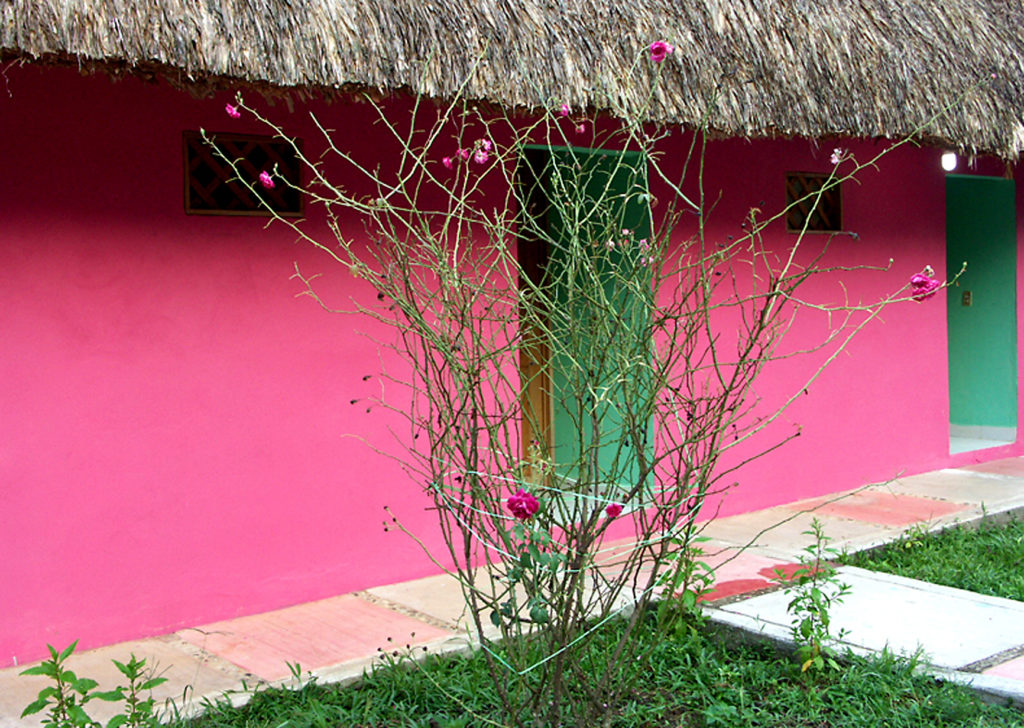
The river with tourist boats and the riparian forest.

One of the wide and well-frequented ant trails led to the sparse riparian forest. Barefooted children used to walk on these ant-roads because there wasn‘t any threat of scorpions or other dangerous animals, other than in the adjacent tree-litter. Watching the traffic on this trail I was immediately pleased to see several really impressive, large soldiers. They hurried down the road much faster than the ordinary workers and foliage cutters. Within ten minutes I counted six of them, in a site a few meters from the nest, running towards the trees where the ants collected their leaf material. Only one soldier returned during this time, without any load. In general, one reads that the task of these soldiers, or „super majors“, is mainly a defence of their colony, only rarely they are said to carry out other useful tasks. When I saw one of these soldiers dragging away a comparatively large twig I wanted to know more. In particular, I wanted to see what happens when obstacles impede the traffic along the trail and if there was special recruitment of soldiers. My pocket knife had to serve as an artificial blockage of the road, here in the overview:
Traffic obstruction. The nest is towards the upper right. Soon, a soldier encounters the obstacle.

That shouldn’t be here!

That has to go! And full of eagerness it tears at the blade! Of course, unsuccessful. The other workers seem uninvolved. Special recruitment did not seem to happen. The next experiment was done with a “soft” barricade. A sheet of paper was stuck in a knife cut across the trail.
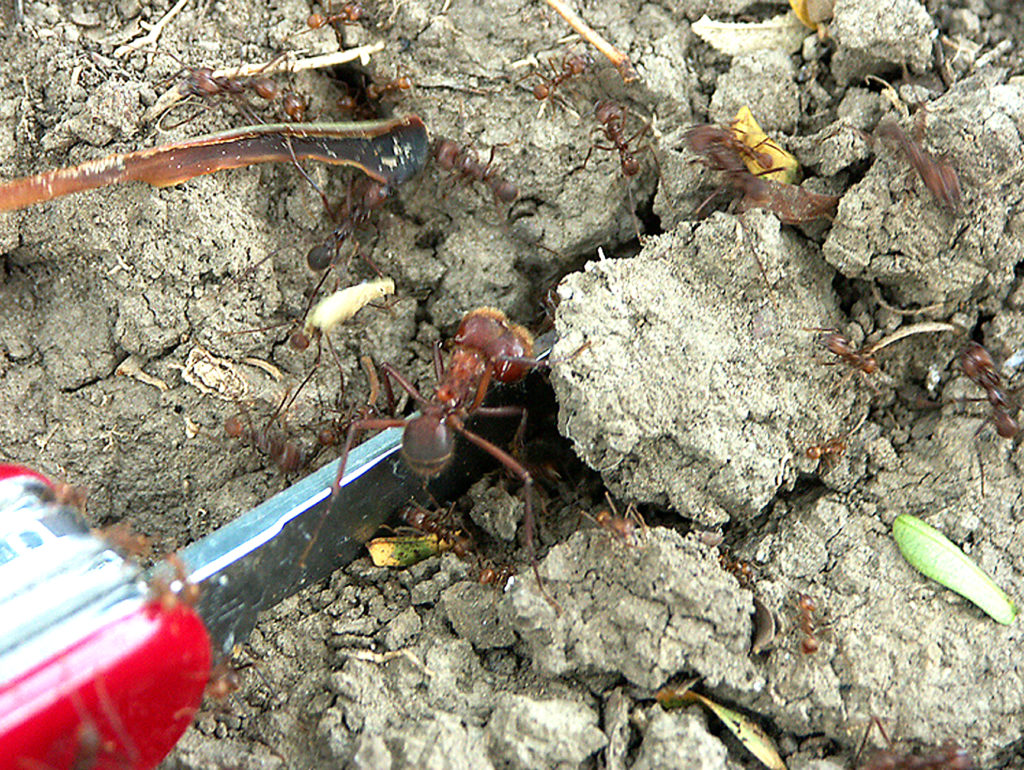
What will they do with this obstacle? You can see how the ants coming from the nest are crowding on the left, and the ants laden with bud scales on the right.
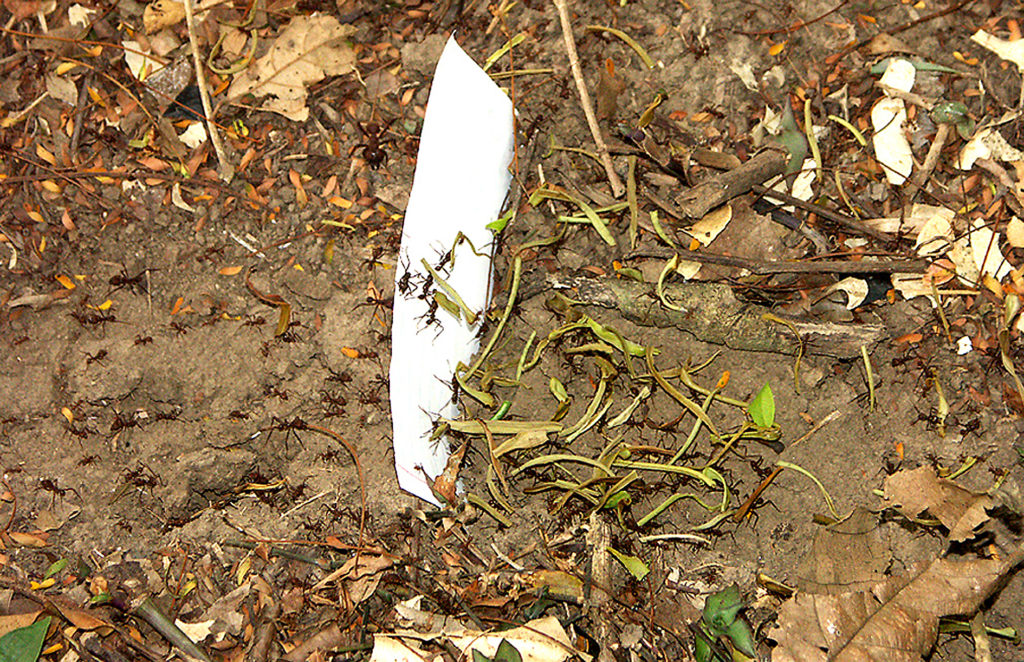
Now the foliage cutters get to work! The traffic jam is getting bigger, carriers try to climb over the obstacle, and there is no sign of soldiers, but a few cutters mount the paper! (A detour sign was not yet set up).

A cutter begins to dissect the paper sheet from the upper edge. The cut is hidden in the picture by the antenna.
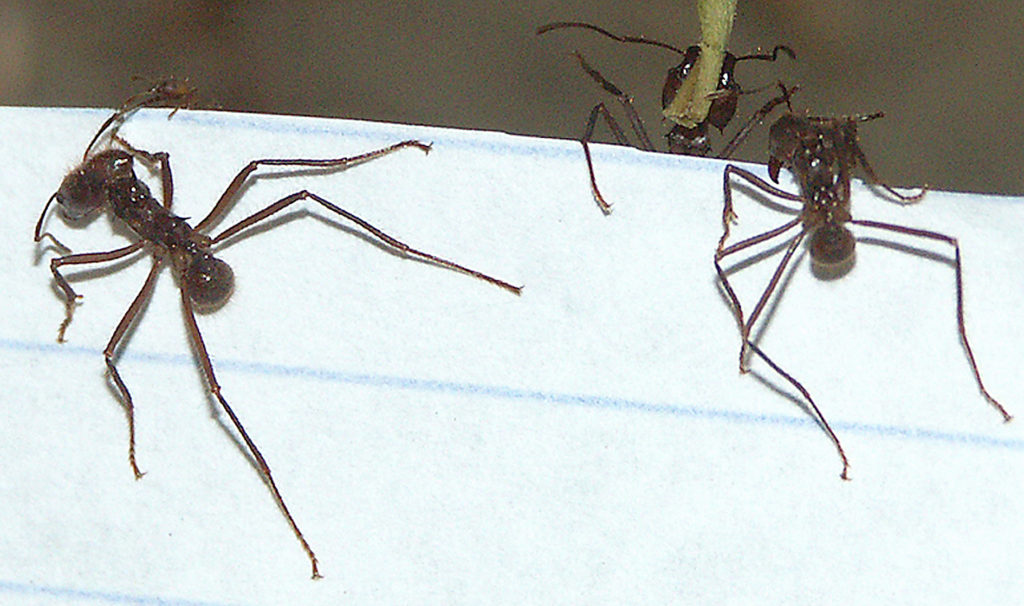
And yes, that’s how it works! Slowly but surely the paper sheet is disassembled.
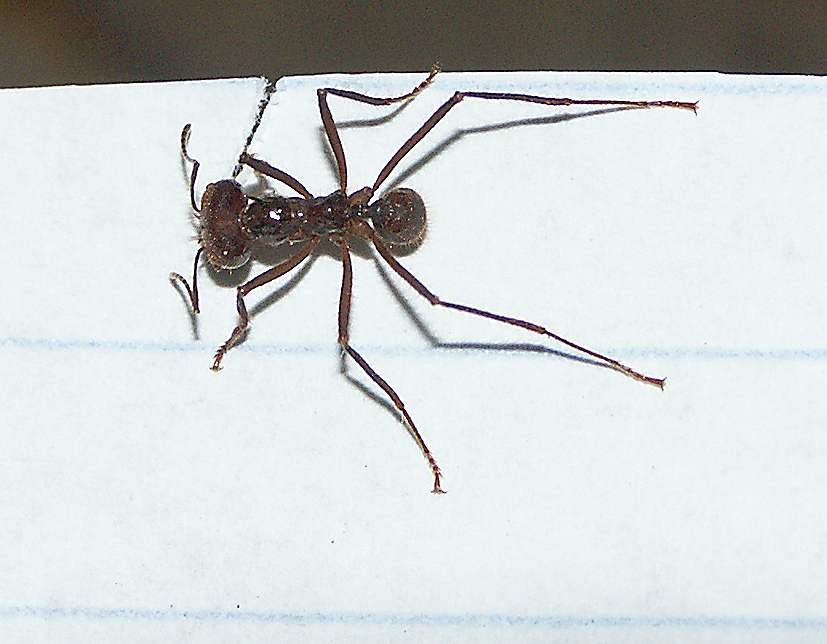
But the ants also try a different solution. In the meantime, the soldiers are beginning to remember their tasks: One is starting to clear the way for a detour.
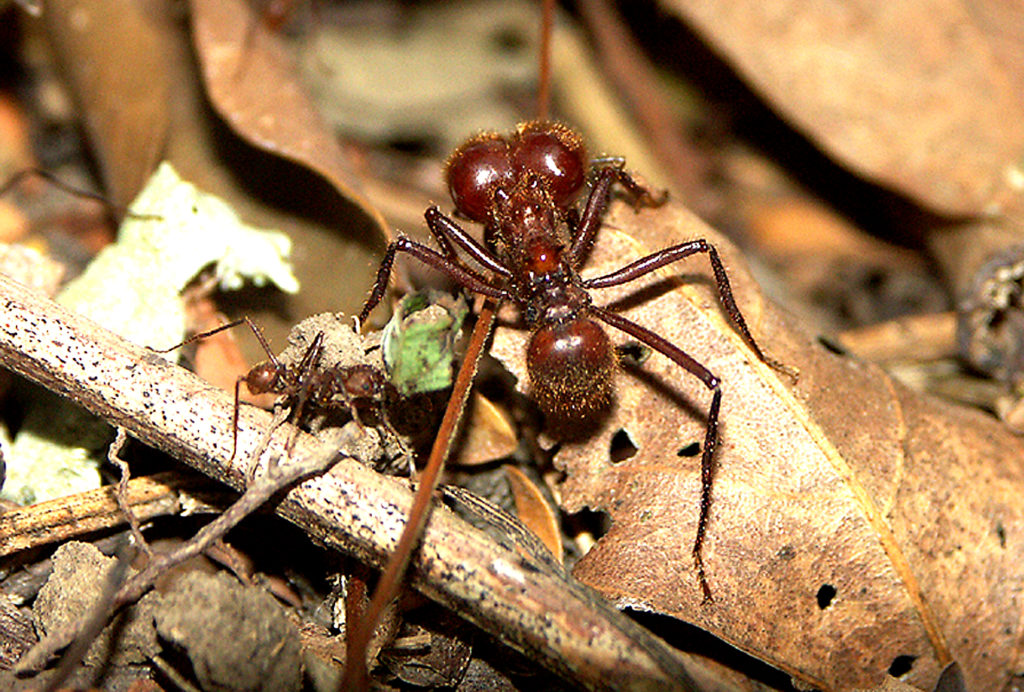
Unfortunately, it quickly got dark, and shortly thereafter a violent tropical rain poured down that brought my observations to an abrupt end. The next morning, I checked: The sheet of paper had disappeared, the notch in the path was barely recognizable, the traffic flowed unhindered. I don’t know whether the paper had been used as food for the ant’s fungus, or whether one of the village boys had taken it with him. In any case, the village youth had a very critical look at my activities. Not surprising: A white-haired tourist crawling around on the ground, writing in a booklet, occasionally flashing, taking pictures of ants that you otherwise only trample on, that’s very suspect! If my wife hadn’t explained to them what I was doing, maybe I would have ended up in a loony bin. By the way: My original plan was to use a cheap Mexican banknote instead of white paper. With a few cleanly cut holes, it would have beautifully documented how excessive road construction eats up money. But under the watchful eyes of the really poor village children, I decided against this. Conclusion: Apparently the leafcutter soldiers, perhaps in addition to their occasional military missions, are responsible for road maintenance, removing major obstacles (represented by the pocket knife in the experiment), while the foliage cutters remove hampering fallen leaves (represented by the sheet of paper), etc. Further experiments would have been desirable, but we still had more touristic plans for the following days.
And one last remark: I remembered the also perfectly clean trails of our European Formica pratensis: Nobody has yet explored how they build and maintain these dozens of meters long roads, which are somewhat impressed into the ground and often become covered over with grass. These ants do not have a soldier caste. But with color markings, one could find out whether there are specialized street wardens who take care of small stones, sand or similar artificially placed obstacles. This seems a great idea as a subject for the „Jugend forscht Contest“, or a school project?


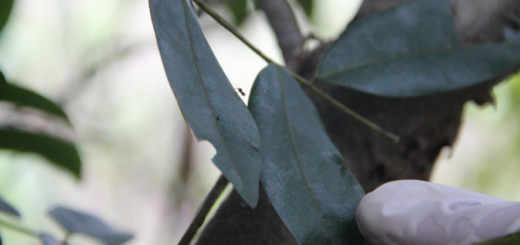
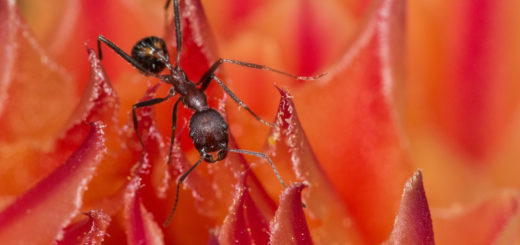

Recent Comments